Iranians Set Soleimani's Photos Ablaze On His Death Anniversary

On the third death anniversary of ex-IRGC commander Qassem Soleimani’s death, people in different parts of Iran burned his statues and posters, including in his hometown.

On the third death anniversary of ex-IRGC commander Qassem Soleimani’s death, people in different parts of Iran burned his statues and posters, including in his hometown.
Videos received by Iran International show people setting fire to Soleimani’s banners and posters in Tehran, Karaj, Zarinshahr, Rafsanjan, and his hometown Kerman.
The Islamic Republic through its propaganda tries to show Soleimani as a national hero, but many people believe he was guilty of war crimes against civilians in Syria and spreading violence in the region.
On January 3, 2020, the US military, on the order of President Donald Trump, killed Soleimani in a drone strike near Baghdad International Airport, saying that he had been "actively developing plans to attack American diplomats and service members in Iraq and throughout the region."
In a Monday statement, the Iranian regime claimed that Washington conducted the killing of Soleimani with "false claims and pretexts, including under the guise of counter-terrorism" and in "naked violation of the tenets and principles of international law."
Iranian Foreign Minister Hossein Amir-Abdollahian said on Sunday that nearly 60 US officials have been blacklisted by Tehran for their involvement in the assassination of Soleimani.
The US State Department told Iran International that Washington protects its citizens against possible retaliatory measures by the Islamic Republic.
At the same time, global efforts are underway to place the Revolutionary Guards in the list of terrorist organizations. The UK and Germany are set to announce the designation of the IRGC in the near future.
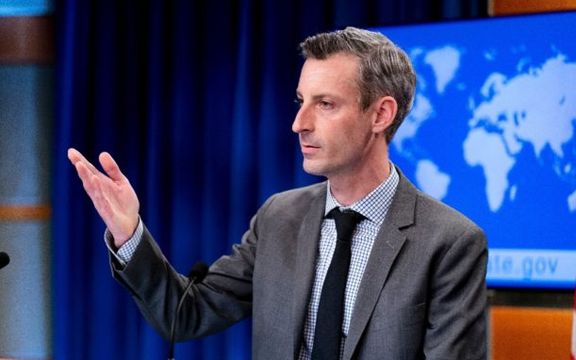
US State Department said Tuesday that nuclear talks with Iran remain dormant and although diplomacy is the preferred approach, other options remain on the table.
Spokesperson Ned Price said the United States has not observed any change from the Iranian side to warrant a resumption of negotiations to revive the 2015 nuclear accord known as the JCPOA. The Biden administration’s 18-month-long diplomatic effort to reach agreement with Tehran arrived at a deadlock in early September.
"We continue to believe that diplomacy is the best way to achieve that goal, but we’ve always been clear we’re not going to remove options from the table, and we’re going to discuss all options with our partners, including, of course, Israel," Price asserted.
Israeli leaders have repeatedly said that they will use any means for stopping Iran from obtaining nuclear weapons.
“The point we’ve made is that the Iranians killed the opportunity for a swift return to mutual compliance with the JCPOA,” he said referring to what the US in September called “extraneous” demands by Tehran.
He also repeated earlier assertions that the Biden administration’s focus is no longer on the nuclear talks, but on the twin issues of protests in Iran and Tehran’s supply of kamikaze drones to Russia, which have been used by hundreds to attack Ukraine’s civilian infrastructure.
“Since September especially, our focus has been on standing up…for the fundamental freedoms of the Iranian people and countering Iran’s deepening military partnership with Russia and its support for Russia’s war in Ukraine,” Price maintained.
Asked if the US has discussed the issue of stopping Iran from supplying UAVs to Russia with Israel, which in the past has been able to sabotage Iran’s nuclear plants, Price said: We have absolutely had discussions with our Israeli partners regarding the threat presented by Iranian UAV technology and the proliferation of Iranian UAV technology to countries around the world, including to Russia.
The Biden administration has been quick in starting discussion with the new Israeli right-wing government headed by Benjamin Netanyahu, a staunch opponent of the JCPOA. Secretary of State Antony Blinken held discussion with the new Israeli foreign minister Elie Cohen in recent days. He told new Israeli Foreign Minister Eli Cohen in a 40-minute phone-call that the JCPOA was finished, and that the US wanted the European Union to step up sanctions against Iran.
Blinken’s reported statement about JCPOA being “finished” echoed President Joe Biden’s remark during an election stomp in early November, when he was heard in a video saying the JCPOA “is dead.”
Biden's remark was welcomed by Israel's former government members who took credit for the failure of the talks. In a tweet on December 20, former prime minister Neftali Bennett said, “Great achievement by our government! Quietly, and through a series of diplomatic and other wise actions, we managed to stop the return to the nuclear deal without confronting the United States.”
Price was also asked during his Tuesday briefing if the administration will support a possible Iranian opposition coalition against the Islamic Republic.
He evaded a direct answer, saying, “first and foremost this is a question for the people of Iran, how or if they want to organize themselves.” But he went on to praise the anti-regime protest movement which “has been sparked and in many ways carried by the women and girls of Iran, but also the fact that it has been organic, it has crossed ethnic lines, it has crossed geographic lines inside of Iran, and it has in a sense been leaderless. That has allowed these protesters to continue and to persist with their efforts in ways that previous movements in Iran have not been able to.”
Price also reaffirmed US support for the movement. “It is our role and responsibility to support their freedom of expression, their freedom of assembly, every single other universal right and freedom that belongs to the Iranian people.”
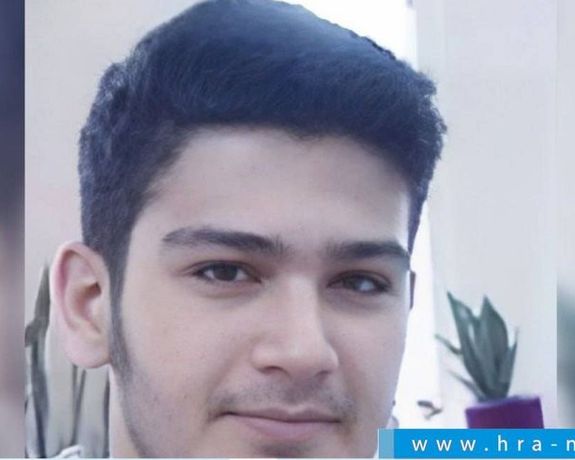
Human right activists say another young Iranian, who was detained during nationwide protests, has received the death sentence on vague political charges.
The US-based Human Rights Activists News Agency HRANA reported Tuesday that Arshia Takdastan, 18, arrested in Nowshahr, has been sentenced to death by a Revolutionary Court in the northern city of Sari in Mazandaran province.
The charges that have led to the death sentence are “enmity with God” and “Corruption on earth,” both vague principles in Islamic law that the regime uses to issue death sentences. Some clerics have challenged the government for using these charges against dissidents.
He has also been sentenced to six years of prison on charges of “disrupting security and inciting people to kill each other”, as well as “propaganda against the institution”. He must also serve two years in prison for “insulting the Supreme Leader”.
According to this report, his accusations are related to the protests held on September 21 in Nowshahr.
HRANA quoted an informed person as saying that “the court issued its verdict based on an accusation that he threw a bottle and a stone at a police car."
The same court on Monday sentenced another 18-year-old protester Mehdi (Shayan) Mohammadifard, to double death.
HRANA said the political prisoner was deprived of the right to have a lawyer and in the absence of his chosen solicitor, the court accused him of "directing and planning" the protest rally on September 21 in Nowshahr.
An informed source close to Mohammadifard's family said, “all the confessions by the defendant during the interrogation were obtained under duress.”

Islamic Republic’s Supreme Leader Ali Khamenei used to be revered by some and feared by some other Iranians but now he is constantly ridiculed and reviled by many people.
Recently, French satirical magazine Charlie Hebdo has launched an international competition -- called "Mullahs Get Out" -- to produce caricatures of Khamenei, as a “symbol of backward-looking, narrow-minded, intolerant religious power.”
On Tuesday, French daily Le Monde published one of the cartoons, saying that Charlie Hebdo is publishing a special issue on the occasion of the eighth-year anniversary of the Paris terrorist attacks, mocking Khamenei in support of the protests in Iran. Charlie Hebdo has been the target of three terrorist attacks: in 2011, 2015, and 2020. All of them were presumed to be in response to a number of cartoons that it published controversially depicting Islam’s Prophet Muhammad. In the 2015 attack, 12 people were killed.
“The freedom to which every human being aspires is incompatible with the archaism of religious thought and with submission to every supposedly spiritual authority, of which Ali Khamenei is the most deplorable example,” Charlie Hebdo wrote.
On Wednesday, Foreign Minister Hossein Amir-Abdollahian censured the controversial French magazine Charlie Hebdo for publishing caricatures of Khamenei, warning of an “effective and decisive response.” The satirical magazine recently launched an international competition -- called "Mullahs Get Out" -- to produce caricatures of Khamenei, as a “symbol of backward-looking, narrow-minded, intolerant religious power.”

As part of the special "January 7" issue, commemorating the anniversary of the 2015 Charlie Hebdo attack, the satirical weekly chose to support Iranian men and women and to "beat the mullahs," Le Monde said, adding that the paper was able to view 35 drawings selected from the 300 sent to the Charlie Hebdo editorial office, including from Iran, Turkey, the United States, Senegal and Australia.
The magazine advised that a cartoon of Khamenei should be the "funniest and meanest" possible, noting that "Cartoonists and caricaturists have a duty to help support Iranians in their struggle as they fight for their freedom, by ridiculing this religious leader who represents the past and casting him into history’s garbage bin.”
“One cartoon shows Khamenei being punched with the slogan 'Women, Life, Freedom,' while another depicts a mullah being crushed under a heel. Among the very political drawings, the supreme leader is also depicted as Marilyn Monroe, whose dress is lifted by the wind of the headscarves that women have freed themselves from. In another, armed with stones, they pommel him,” Le Monde described some of the works.
Since the beginning of the current wave of protests in mid-September, Charlie Hebdo also published other cartoons of Khamenei, one of which prompted the Islamic Republic’s Foreign Ministry to summon the French chargé d'affaires in Tehran. In the cartoon, Khamenei is depicted with bloody hands and a turban and an attire with the logo of clothing manufacturing company Nike and its motto: Just Do It.
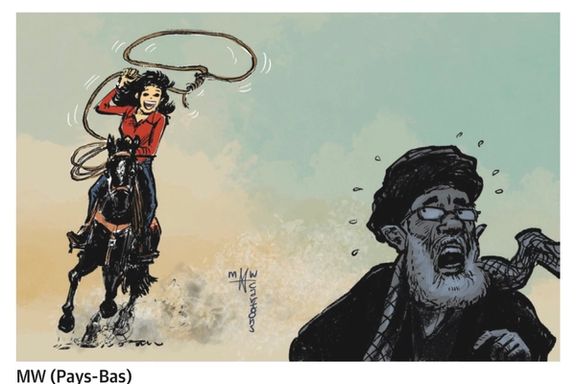
The landscape of Iranians’ protests against the regime has never been this openly full of insults and slogans against the country’s ruler. Chanting “Death to the Dictator” and “Death to Khamenei” was still a taboo until very recently even during the protests. But now, making fun of the authorities and even the dead ones – which is extremely frowned upon in Iranian society – has become a common way of protests.
In December, a famous Iranian actor lashed out at Khamenei saying at least try to be a “personable dictator”. He compared Khamenei with other dictators such as Francisco Franco, Mao Zedong, Joseph Stalin and Benito Mussolini, saying he is “mentally ill” just like his “colleagues”.
January 3 marks the death anniversary of the commander of IRGC’s Quds (Qods) Force -- a division primarily responsible for extraterritorial military and clandestine operations. He was one the most revered figures of the Islamic regime and was killed in a drone strike ordered by former President Donald Trump. His body was so mutilated in the explosion that many social media users described him as a “Cutlet” after his death, an Iranian dish resembling hamburgers mixed with potatoes. Despite extravagant ceremonies to honor his memory, Iranians are burning his banners and statues all over the country and even named January 3 as World Cutlet Day.
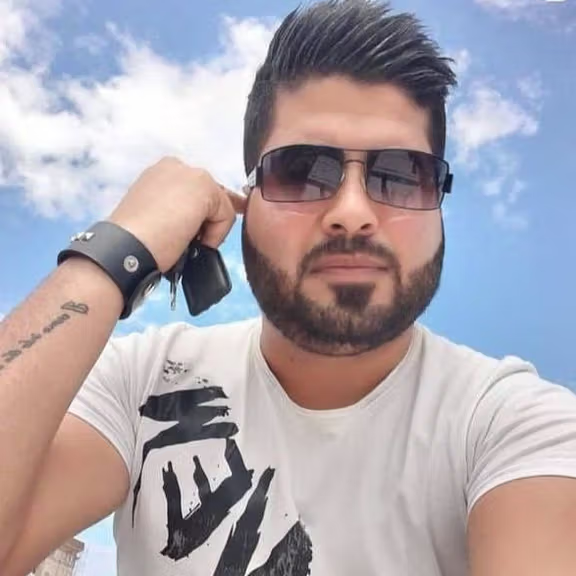
Iran International has learned that one of the victims of Iran protests was shot from behind the head at close range by an IRGC commander in northern Iran.
Mehran Basir Tawana, a 29-year-old athlete from Foman, was shot on November 16 on the anniversary of those who were killed in 2019 protests.
One of his relatives, whose identity cannot be revealed due to security reasons, told Iran International that "On November 16, Mehran got out of work with his friend to go shopping. On the way back, he saw a group of government agents beating an old woman."
"Mehran got out of the car to talk to the security forces very calmly to convince them not to beat her, but when he wanted to help the old lady to get out of the area, a commander of IRGC shot him in the back of the head, at a distance of almost one meter…,” he added.
According to this informed person, Mehran Basir Tawana was taken to hospital by other people, but three days later he succumbed to his injuries in Rasht hospital.
During a memorial ceremony for Mehran a few days later, those present chanted slogans against the Islamic Republic, and after that, the threats and harassment of other family members begin.
According to the source, at the same time one of the family members, who only published stories about Mehran's death, was arrested and has been tortured for more than a month.
Iranian human rights groups abroad monitoring the protests report that more than 500 civilians, including 64 children and 34 women, have been killed during since unrest began after the death of Mahsa Amini in police custody in mid-September.
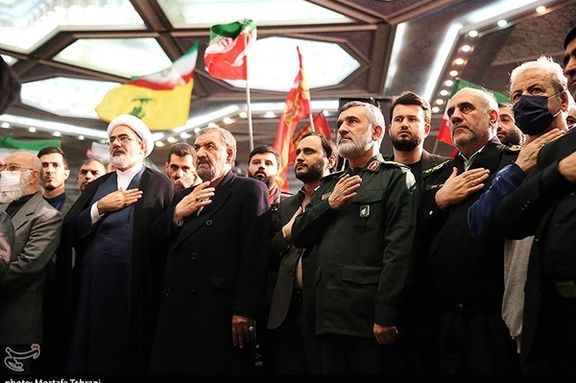
The Iranian Foreign Ministry says the US killing Qassem Soleimani. former commander of IRGC's Quds Force in 2020 failed in bringing Washington its desired outcome.
In a tweet on Tuesday, the foreign ministry claimed Iran continues “to play a decisive role” in the region and the United States’ “footprint in West Asia continues to diminish”.
The tweet was published on the eve of the third anniversary of Soleimani’s killing by the United States.
On January 3, 2020, the US military, on the order of President Donald Trump, killed Soleimani in a drone strike near Baghdad International Airport, saying that he had been "actively developing plans to attack American diplomats and service members in Iraq and throughout the region."
In a Monday statement, the Iranian regime also claimed that Washington conducted the killing of Soleimani with "false claims and pretexts, including under the guise of counter-terrorism" and in "naked violation of the tenets and principles of international law."
Iranian Foreign Minister Hossein Amir-Abdollahian said on Sunday that nearly 60 US officials have been blacklisted by Tehran for their involvement in the assassination of Soleimani.
Iran’s President Ebrahim Raisi and Supreme Leader Ali Khamenei have time and again vowed revenge for the killing of Soleimani.
Raisi in a speech on Tuesday addressed the US saying, “We have not forgotten martyr Soleimani’s blood and will never forget. They [Americans] should know that revenge for Soleimani is certain and his killers…will not have any peaceful sleep.”

At the same time, many Iranian regime opponents and activists on social media celebrated Soleimani’s killing anniversary, calling it a “Cutlet Day”, after a popular Iranian dish made of ground beef and potatoes. Soleimani’s body was so mutilated in the attack that his detractors came up with the comparison to the meat and potato patties.
Some activists said that if Soleimani was alive he would have ordered a more brutal response to the current protests and would have had no reservations about killing thousands of people. They accused him of playing such a role in past protests and engineering Iran’s bloody military intervention in Syria against anti-Assad rebels, when hundreds of thousands of people were killed, injured and left homeless.
Protesters in Iran burned many banners erected in Soleimani’s honor this week and set fire to several of his statues.
A member of Iranian Revolutionary Guard was charged in August with planning to assassinate John Bolton, the former United States National Security Advisor in what the US Justice Department called “retaliation for the death of Iran’s Islamic Qasem Soleimani”.
Former Secretary of State Mike Pompeo was also told by the Justice Department that he was a second target of the plot.
Soleimani, who was Iran’s top military and intelligence operator outside its borders, was in charge of supporting and organizing militant proxy forces, including the Lebanese Hezbollah and Iraqi Shiite militia groups that have repeatedly attacked US forces.